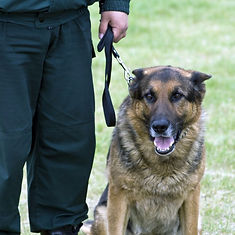
SECURITY DOG FIRST AID
Course Curriculum
Introduction to Security Dog First Aid
-
Security Dog First Aid Course Overview
-
The vet and your role in first aid
-
When is veterinary care required
-
Keeping your pet safe in an emergency
-
Car accidents
-
Pet proofing your home
-
Use of gloves
-
Hand hygiene
-
Checking a Dog's Health
-
Checking your pet's health and finding out what is normal
-
How pets show pain
-
Taking a Pulse
-
Taking the Temperature
-
Gum Colour
-
Loss of appetite
-
-
First Aid Kits and Equipment
-
Pet First Aid Kits
-
Advanced Pet First Aid Kit
-
Elizabethan Collars
-
Pet First Aid Sprays
-
Pet First Aid Wipes
-
Pet Wrap Bandages
-
Use of muzzles
-
-
CPR, Accidents and First Aid
-
Breathing and Respiratory Problems
-
CPR Introduction
-
Pet CPR
-
Pet CPR Practical Demonstration
-
Drowning and Treatment
-
Near and Secondary Drowning
-
Shock
-
Pet Fractures Treatment
-
Spinal injury and moving an injured pet
-
-
Medical Conditions
-
Types of bleeding
-
Dressings, bandages and controlling bleeding
-
Pet wrap bandages
-
Paw problems
-
Ears, Eyes and Mouth
-
Bandaging the Ear
-
Bandaging the Tail
-
Bandaging Aftercare
-
Digestive Process
-
Vomiting in animals
-
Pets and Illnesses
-
Poisoning, bites and Stings
-
Inducing Vomiting in a dog
-
High temperatures and heatstroke
-
Hypothermia treatment
-
Seizures and epilepsy
-
Choking overview
-
Choking
-
Snake bites on pets
-
Ticks
-
Insect Stings
-
Urination problems
-
Bloat
-
-
Different types and sizes of animals
-
The older dog
-
Small dog care
-
Puppies and young animals
-
-
Summary
-
Pets and Fireworks
-
Human First Aid
-
Record keeping with security dogs
-
Summary to the Pet First Aid App
-
LO1 Explain the importance of immediate attention to the dog and/or the need to obtain veterinary assistance
LO2 Explain the actions and precautions to be taken following a dog that has stopped breathing.
LO3 Explain the actions to be taken following a dog that has a broken limb
LO4 Explain the actions to be taken following a dog that is bleeding form a wound.
LO5 Explain the signs and symptoms following the ingestion of a harmful substance by a dog and how (and when) to induce vomiting.
LO6 Explain the actions to be taken following ingestion of a foreign body by a dog.
LO7 Summarise the contents of a Canine first aid kit
LO8 Identify safety equipment which may be of use when dealing with a sick or injured dog.
LO9 Demonstrate the fitting of a muzzle and explain its use.
LO10 Define the common signs and symptoms of illness and identify their treatment.
LO11 Identify the appropriate reports and records required following the administration of first aid.


Security Dog First Aid at a glance
-
Nationally Recognised Qualification lasts for 3 years
-
Printable wall certificate
-
CPD time credit conformation
-
Includes manual & other downloads
-
Free weekly video refresher
-
Evidence Based Training certificate
-
Engaging and hands on classroom training
This course is approved by NASDU for the requirement of pet first aid in their standards. First aid is important to know for your security dog not only to comply with associations and local authorities but also for animal welfare and to help a dog in need. The nature of working with dogs will pose a risk that they may be harmed in the course of their work or transport.
This course has designed to meet the NASDU learning outcomes and added a few extra modules to ensure full understanding.
